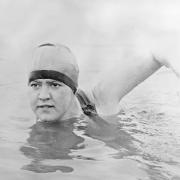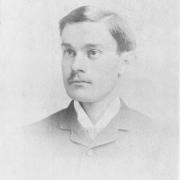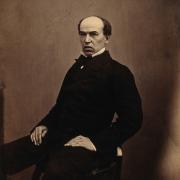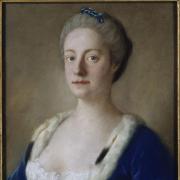Born on October 27 1889 at the unfortunately named Borstal Cottage, in Manor Road, Rochester, Enid Algerine Bagnold is best known for her 1935 story National Velvet, which inspired a film starring a young Elizabeth Taylor. A natural-born rebel, she’d end her days as a lady of the manor.
She was the daughter of army officer and military engineer Col. Arthur Bagnold and Ethel, née Alger, who’d only been married ten months. Neither of her parents were Kent natives but it’s possible her father might have been based briefly at Fort Borstal, with Borstal then a village just outside Rochester. The youth incarceration system to which ‘Borstal’ gave its name was established at the local prison after Enid’s birth and then spread around the world. Today, though, Borstal village has been swallowed up by the town.

Enid was partly raised in Jamaica, where her father was posted, then went on to attend art school in London. Her younger brother, Brigadier Ralph Bagnold (1896-1990), was a soldier, explorer and geologist, who’d serve in WW1. In the war’s early stages Enid was an art student at Walter Sickert’s studio in Chelsea and was painted here by Frenchman Maurice Asselin (1882-1947). who was Sickert’s closest friend (Sickert is another interesting character, a German-born Post-Impressionist who’d be posthumously named a ‘Jack the Ripper’ suspect, an allegation largely discredited today). Enid was also sculpted by the French artist-sculptor Henri Gaudier-Brzeska, who would be killed on the Western Front. Enid served in the Great War, firstly as a nurse, then as a driver in France, experiences that were inspirational in leading her towards writing her memoir A Diary without Dates was published in 1917 and novel The Happy Foreigner in 1920.
An early foray into the literary world saw Enid working as assistant editor on a magazine run by editor, publisher, writer and journo Frank Harris. Despite an age difference of over thirty years, the pair became lovers to be immortalised in the novel The Will to Love (1919) by Hugh Kingsmill Lunn. It was already evident that Enid, now aged 30, would live anything other than a humdrum existence. She also had an affair with a Romanian prince.


Enid married Sir George Roderick Jones, co-owner and chairman of Reuters, on July 8, 1920. They would have four children together, including two published authors and a juvenile illustrator. One of her great-granddaughters is Samantha Cameron, wife of erstwhile PM, David. Virginia Woolf remarked caustically that Enid was ‘a scallywag who married a very rich man’ but there was more to her than a handy coupling. Setting up home near Brighton they lived the life, a social whirl surrounded by servants in a home that had belonged to famed artist, Sir Edward Burne-Jones. Servants were not numbers to Enid; the figure of the butler, for example, became someone significant in her writing. The garden here inspired another of Enid’s works, her play The Chalk Garden (1955), which picked up a couple of awards, including a prize from the Academy of Arts and Letters. The couple also had a London home where the socialising continued. The Chalk Garden. meanwhile, was Enid’s most successful play and was turned into a film (1964) starring father and daughter John and Hayley Mills, and Deborah Kerr. On stage The Chalk Garden offered strong female lead roles, ensuring that, over the years, it has attracted actresses of the calibre of Dorothy Tutin and Helena Bonham Carter. Two of Enid’s other plays were staged on Broadway - two out of eight that were performed, the first being Lottie Dundass, a murder mystery, published in 1941.
Enid’s most famous work, though, was National Velvet (1935), the story of a young lass,Velvet Brown, who against all odds competes in the Grand National at Aintree on a horse that cost a tenner in a raffle and in an era before lady jockeys. The 1944 film version was a hit, with young Liz Taylor (Velvet) supported by Mickey Rooney (Mi Taylor) as the ex-jockey who trains Velvet’s horse, Pie, for the race, and Donald Crisp as Velvet’s father. Also adapted for the stage, it’s a good yarn and, in the best spirit of ‘you can’t keep a good story down’, was reprised firstly as a TV series of over 50 episodes (1960-62), then as a film sequel, International Velvet (1978), in which Nanette Newman played an adult Velvet, while Tatum O’Neal took on the equestrian role as Sarah Brown, Velvet’s niece. It’s not the Grand National this time, but the Olympic Three-Day Event.


Enid was no one-trick pony (apologies), though. She showed admirable versatility in both style and subject - for example, the docu-novel The Squire (1938), also known as The Door of Life, is about childbirth and is regarded as a feminist triumph, whereas The Loved and Envied (1951) looks at approaching old age. In many respects she was a pioneering authoress, writing about situations and relationships that other writers were not yet ready to commit to paper.
Enid published her autobiography in 1969 and was awarded the CBE in 1976 for services to literature. She died on March 31 1981 aged 91. Her posthumous biography of 1987 revealed what a rebellious, counterculture life Enid had led, with literary feuds, an addiction to morphine, pre-war Nazi sympathies (she wasn’t unusual there), and her intense dislike of many actors who graced her plays. ‘A strange, remarkable, original and warped life’ said artist-photographer Cecil Beaton, who’d designed the set when The Chalk Garden was staged in New York in 1955. Her life was certainly nothing if not interesting. Her 20-odd works occupied more than 60 years from the WW1 era until the year before her death, when her Letters to Frank Harris & Other Friends was published.
Rochester may be famed for links to Charles Dickens but its literary connections certainly do not begin and end there. Of the others, one of the most eminent is certainly Enid Bagnold, or ‘Lady Jones’ as she became, the pioneering rebel with the prickly personality and a passion for celebrity. Her musing ‘I was not a born writer, but was born a writer’ typifies the enigma that was Enid. No-one was quite sure what to make of her; I think that’s still the case.




























